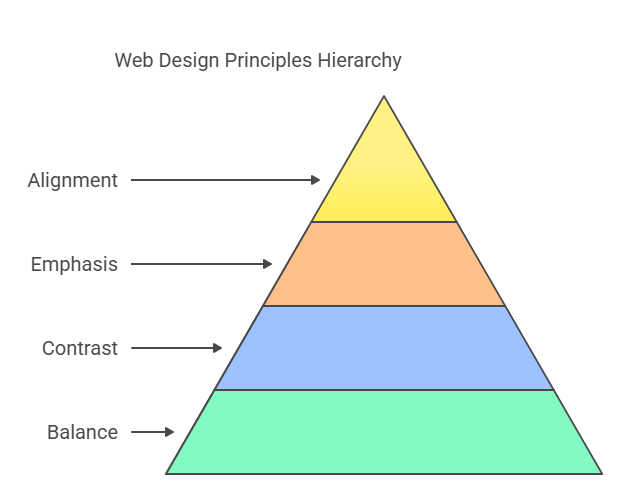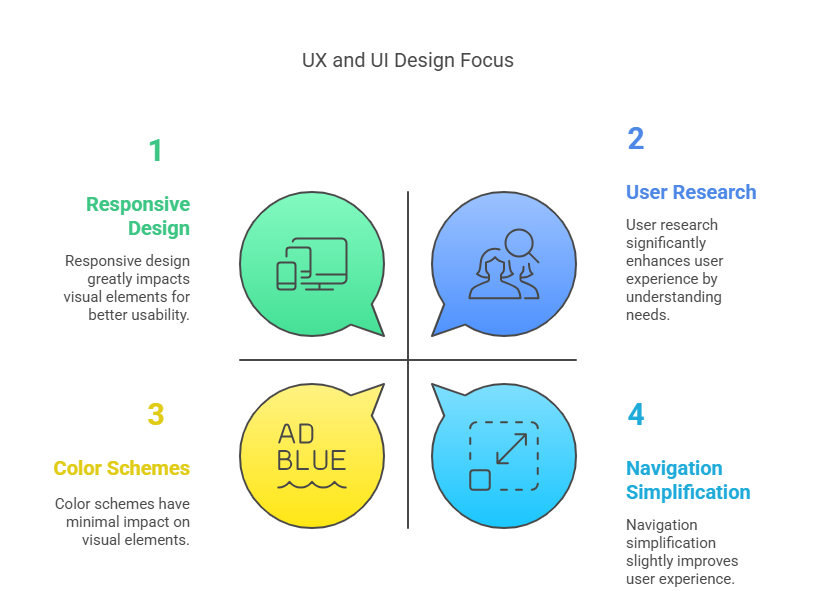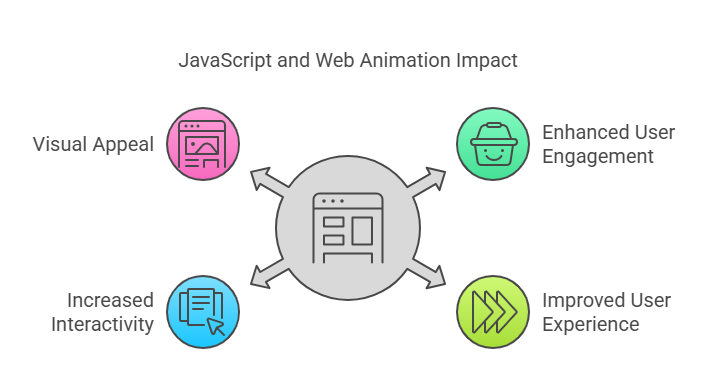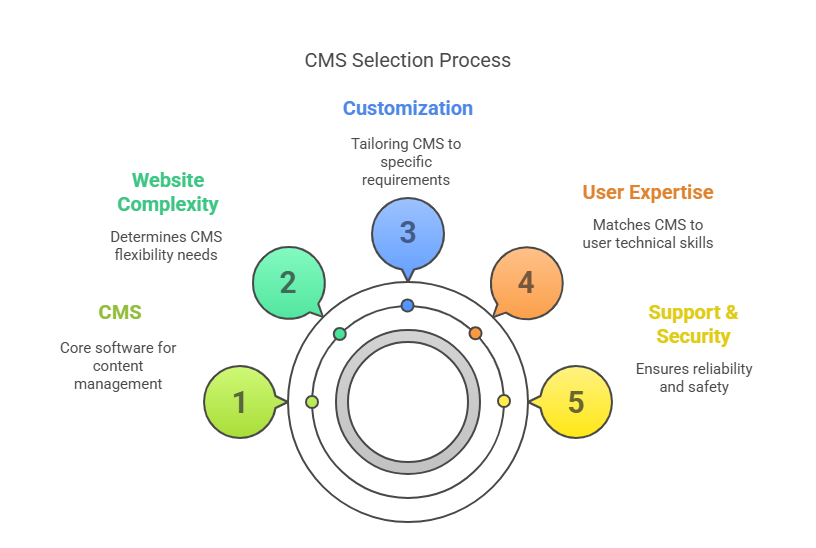In the ever-evolving world of web design, possessing a robust set of skills is crucial for success. A mix of technical prowess and creative insight is required to create compelling and user-friendly web pages. This article outlines ten essential web design skills that every aspiring web designer should strive to master, providing a solid foundation for a rewarding career in web design.
Understanding of Basic Design Principles
What are the fundamental design principles?
The fundamental design principles form the backbone of any successful web design project. These principles include balance, contrast, emphasis, and alignment, which all contribute to the overall visual composition of a web page. Understanding how to apply these elements effectively is crucial for creating aesthetically pleasing and functional layouts. Balance ensures that the design feels stable and harmonious, while contrast helps highlight important sections of the content. Emphasis directs the user’s attention to key areas, and proper alignment provides a clean and organized appearance. Mastering these design elements enables web designers to construct visually engaging and intuitive web pages.
Why are these principles crucial for web design?
Basic design principles are vital in web design because they guide the creation of intuitive and user-friendly interfaces. These principles ensure that the design is not only visually appealing but also easy to navigate, enhancing the overall user experience. By applying principles like balance and contrast, a web designer can create a layout that naturally guides the user’s eye through the content, improving usability and engagement. Emphasizing key elements ensures that users can quickly find the information they need, while alignment helps maintain a clean and professional look. Understanding these principles is essential for crafting designs that meet both aesthetic and functional requirements, leading to more successful web design projects.

Proficiency in HTML and CSS
How does HTML and CSS form the foundation of web design?
HTML and CSS are the building blocks of web design, forming the structural and stylistic foundation of any web page. HTML provides the basic structure, allowing web designers to define elements such as headings, paragraphs, and images. CSS, on the other hand, is used to style these elements, controlling the layout, colors, fonts, and overall visual appearance. Proficiency in these coding languages is essential for any web designer, as it enables the creation of custom and flexible designs. A deep understanding of HTML and CSS allows designers to effectively translate their creative visions into functional web pages that perform well across different browsers and devices.
What are some advanced HTML and CSS techniques?
Advanced HTML and CSS techniques involve using modern tools and methodologies to enhance web design capabilities. This includes employing CSS Grid and Flexbox for sophisticated layouts, enabling more precise control over the positioning and alignment of elements. Understanding responsive design techniques using media queries in CSS is also crucial for creating designs that adapt seamlessly to different screen sizes. Advanced HTML features, such as semantic elements and HTML5 APIs, help improve accessibility and functionality. Mastering these techniques allows web designers to create more dynamic, efficient, and engaging web applications, pushing the boundaries of what can be achieved with web design.

Mastering Responsive Design
What is responsive design and why is it important?
Responsive design is an approach to web design that ensures a web page looks and functions well on a variety of devices and screen sizes. This design technique is crucial in today’s mobile-first world, where users access websites on phones, tablets, and desktops. Responsive design involves using flexible grids, fluid images, and media queries to adapt the layout to the user’s device. This ensures that the content is easily readable and navigable regardless of the screen size. Mastering responsive design is essential for web designers to provide a consistent and optimal user experience, which can significantly enhance user satisfaction and engagement.
How can you ensure your design is mobile-friendly?
Ensuring a web design is mobile-friendly involves several key practices that address the unique needs of mobile users. Firstly, implementing a responsive layout using CSS media queries helps adjust the design to different screen sizes. Simplifying navigation elements, such as using hamburger menus, ensures that users can easily access content on smaller screens. Optimizing images and other media for faster loading times is also crucial, as mobile users often have limited bandwidth. Additionally, prioritizing touch-friendly elements, such as larger buttons and interactive areas, enhances usability on touch devices. By focusing on these aspects, web designers can create mobile-friendly designs that offer a seamless user experience.

Expertise in UX/UI Design
What are the differences between UX and UI design?
UX (User Experience) and UI (User Interface) design are two distinct yet interconnected aspects of web design. UX design focuses on the overall experience a user has while interacting with a website, emphasizing functionality, usability, and satisfaction. It involves researching user needs, creating user personas, and ensuring the design is intuitive and user-friendly. UI design, on the other hand, deals with the visual elements of a website, including layout, color schemes, typography, and interactive elements. While UX aims to provide a seamless experience, UI ensures that the interface is aesthetically pleasing and aligns with the brand’s identity. Both are essential for creating effective and engaging web designs.
How can you improve user experience on a website?
Improving user experience (UX) on a website involves understanding user needs and tailoring the design to meet those needs effectively. Conducting thorough user research and testing is crucial to gain insights into user behavior and preferences. Simplifying navigation and ensuring the website is easy to use can greatly enhance UX. Additionally, optimizing loading times, providing clear and concise content, and ensuring the design is responsive contribute to a positive experience. Implementing user feedback loops and continuously iterating on the design based on real-world usage data also play a vital role in refining the user experience. These practices help web designers create websites that are not only functional but also delightful to use.

Familiarity with Web Development Tools
What are the essential tools every web designer should know?
Web development tools are vital for enhancing the efficiency and effectiveness of the web design process. Essential tools that every web designer should be familiar with include text editors like Sublime Text or Visual Studio Code, which provide robust coding environments. Version control systems such as Git allow designers to manage changes and collaborate with other developers seamlessly. Design software like Adobe XD or Sketch is crucial for creating wireframes and prototypes. Additionally, understanding browser developer tools helps in debugging and optimizing web pages. Familiarity with these tools equips web designers with the technical skills needed to create high-quality web applications efficiently.
How do these tools enhance the design process?
Web development tools significantly streamline the design process, enabling web designers to work more efficiently and effectively. Text editors with syntax highlighting and code completion features make coding faster and reduce errors. Version control systems facilitate collaboration, allowing multiple designers and developers to work on the same project simultaneously without conflict. Design software enables designers to create detailed prototypes and wireframes, providing a visual representation of the final product before development begins. Browser developer tools allow designers to inspect and modify code in real-time, enhancing troubleshooting and optimization. These tools collectively empower web designers to produce high-quality web designs while improving productivity and collaboration.

Knowledge of JavaScript and Web Animation
Why is JavaScript important for modern web design?
JavaScript is a critical programming language for modern web design, providing dynamic and interactive elements that enhance user engagement. It allows web designers to create responsive and interactive components, such as sliders, forms, and animations, which contribute to a richer user experience. JavaScript also enables the development of complex web applications by handling client-side logic and interacting with web servers for data retrieval. Its versatility and widespread compatibility make it an essential skill for web designers aiming to create engaging and functional web pages. Mastery of JavaScript opens up a world of possibilities for enhancing interactivity and functionality in web design projects.
How can animations improve user engagement?
Animations are a powerful tool in web design that can significantly boost user engagement by making web pages more interactive and visually appealing. They can guide users through a website, draw attention to important elements, and provide feedback on user actions. Well-designed animations create a sense of fluidity and responsiveness, making the interaction feel more intuitive and enjoyable. Subtle animations, like hover effects and loading spinners, enhance the user interface by providing visual cues that improve navigation and usability. By incorporating animations thoughtfully, web designers can create immersive experiences that captivate users and encourage them to explore the website further.

Graphic Design Skills
How does graphic design integrate with web design?
Graphic design plays a pivotal role in web design, as it involves creating the visual elements that define the look and feel of a website. It encompasses the design of logos, icons, images, and other graphical components that contribute to the brand’s identity. Effective graphic design enhances the aesthetic appeal of a web page, making it more engaging and memorable for users. By integrating graphic design with web design, designers can create visually cohesive and branded experiences that resonate with users. This integration ensures that the visual design aligns with the website’s objectives and enhances the overall user experience.
What tools and software are best for graphic design?
Several tools and software are essential for graphic design, providing web designers with the capabilities to create stunning visual elements. Adobe Photoshop and Illustrator are industry-standard tools for editing images and creating vector graphics, respectively. These tools offer a wide range of features for designing high-quality graphics. Sketch and Figma are popular choices for creating UI designs and prototypes, offering collaborative features that enhance teamwork. Canva is a user-friendly tool that provides templates and design elements for creating quick graphics. Mastery of these tools allows web designers to produce professional-grade graphics that elevate the visual appeal of web design projects.

SEO Best Practices
Why is SEO important for web design?
SEO (Search Engine Optimization) is crucial for web design because it directly impacts a website’s visibility and accessibility in search engine results. A well-optimized website attracts more organic traffic, as it ranks higher in search results, making it easier for users to find. SEO involves structuring web content and using relevant keywords to improve search engine rankings. By incorporating SEO best practices into web design, designers ensure that the website is not only visually appealing but also search-friendly, increasing the potential for user engagement and conversion. Understanding SEO is essential for creating web designs that achieve both aesthetic and strategic business goals.
What are the best practices to ensure SEO-friendly design?
Ensuring an SEO-friendly design involves implementing several key practices that enhance a website’s search engine performance. This includes optimizing page load times by compressing images and using efficient coding practices, which improve user experience and search rankings. Structuring content with clear headings and using descriptive, keyword-rich meta tags help search engines understand and index the content effectively. Creating a mobile-friendly design is also crucial, as search engines prioritize responsive websites. Additionally, using clean and semantic HTML enhances accessibility and SEO. By adhering to these best practices, web designers can create websites that are both user and search engine-friendly, maximizing visibility and reach.

Understanding of CMS Platforms
What is a CMS and why is it important?
A CMS, or Content Management System, is a software platform that allows users to create, manage, and modify web content without requiring extensive technical knowledge. CMS platforms like WordPress, Joomla, and Drupal are widely used in web design because they simplify the process of updating and managing website content. They provide user-friendly interfaces that enable web designers and clients to maintain websites efficiently. Understanding CMS platforms is crucial for web designers, as it allows them to build flexible and scalable websites that can be easily managed by non-technical users. This knowledge empowers designers to deliver dynamic web solutions tailored to their clients’ needs.
How do you choose the right CMS for a project?
Choosing the right CMS for a project involves evaluating several factors to ensure it meets the specific needs of the website. Considerations include the complexity of the website, the level of customization required, and the technical expertise of the users who will manage it. WordPress is ideal for blogs and small business websites due to its simplicity and extensive plugin ecosystem. Joomla offers more flexibility for complex sites, while Drupal is suited for large, complex projects requiring high customization. Evaluating these factors, along with assessing the community support and security features of the CMS, helps web designers select the most appropriate platform for their client’s needs.

Strong Communication and Collaboration Skills
Why are communication skills crucial for web designers?
Communication skills are essential for web designers as they facilitate effective collaboration with clients, team members, and stakeholders. Clear communication ensures that the designer understands the client’s vision, requirements, and feedback, allowing for the creation of designs that align with project goals. It also helps in articulating design decisions and justifying changes during the design process. Good communication fosters a positive working relationship with clients, leading to higher satisfaction and successful project outcomes. For web designers, honing communication skills is as important as technical skills, as it directly impacts the quality and effectiveness of the design process.
How can collaboration enhance the design process?
Collaboration enhances the design process by bringing together diverse perspectives and expertise, leading to more innovative and effective solutions. Working collaboratively with developers, marketers, and other stakeholders ensures that all aspects of the project are aligned and that the final product meets the desired objectives. Collaborative tools and platforms facilitate seamless communication and project management, allowing team members to share ideas, provide feedback, and track progress in real-time. This collaborative approach not only improves the quality of the design but also fosters a sense of teamwork and shared ownership, contributing to the overall success of web design projects.

Frequently Asked Questions (FAQs)
Mastering web design skills is crucial because it forms the backbone of a successful web design career. A skilled web designer can create stunning, user-friendly web pages that stand out. These skills you need are essential for crafting web applications that not only look good but also function seamlessly. It’s not just about making things pretty; it’s about ensuring web accessibility, improving user experience, and staying ahead of web design trends.
The top 10 essential web design skills include visual design, ux design, responsive design, programming languages like HTML, CSS, and JavaScript, graphic design, web accessibility, design principles, project management skills, communication skills, and problem-solving skills. These are the skills for web designers that make a successful web designer who can handle web design projects efficiently.
Responsive design is absolutely crucial in today’s web design world. With the proliferation of different devices and screen sizes, ensuring that your web page looks good and functions well on all devices is a must. Responsive design ensures that web content adapts seamlessly, providing a good user experience regardless of whether you’re on a phone, tablet, or desktop. It’s a design element every web designer should master.
As a web designer, focusing on programming languages like HTML, CSS, and JavaScript is essential. These are the foundation of web development and are critical for bringing your designs to life. HTML structures the content, CSS styles it to make it visually appealing, and JavaScript adds interactivity and dynamic functionality. Learning these languages ensures you can build responsive, engaging, and user-friendly websites. Additionally, understanding basic PHP and familiarity with frameworks like React or libraries like jQuery can give you an extra edge in more advanced projects.




